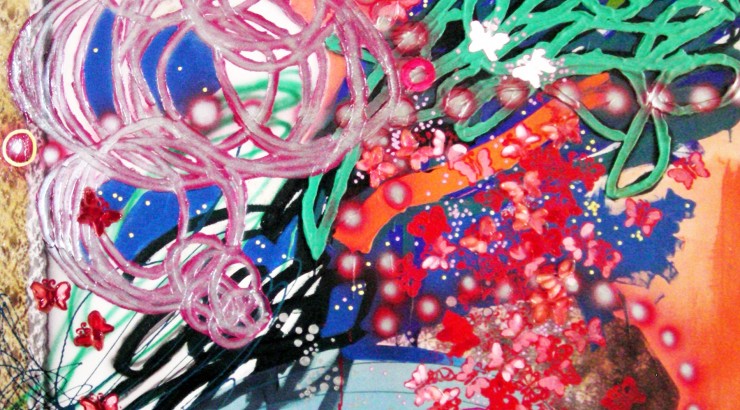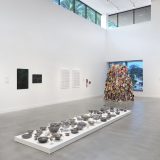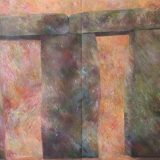A Celebration of the Escalette Collection’s Female Artists In Honor of Women’s History Month
April 1, 2025
As Women’s History Month comes to an end, it is important to honor women’s achievements, resilience, and creativity throughout history. This celebration is especially significant in the art world, as female artists have historically been marginalized and overlooked within mainstream portrayals. The Phyllis & Ross Escalette Permanent Collection of Art, an academic unit of Wilkinson College of Arts, Humanities, and Social Sciences, provides a powerful counterpoint to this exclusion by showcasing the work of countless female artists whose contributions have enhanced contemporary art.
The Escalette Collection is known for its commitment to diversity, featuring artists from various backgrounds, media, and perspectives. Numerous remarkable women are represented in the collection, as they each use their voices to tell stories, challenge conventions, and explore identities.
Here are just a few of the exceptional female artists featured in the collection whose work is currently on display throughout Chapman’s campus:
Millie Wilson

Millie Wilson, Untitled (boys in desert), color transparency in aluminum light box, 2013. On view: Smith Hall, Stairway B
Wilson focuses on surrealism and minimalism to create works that, she says, tell “a secret history of modernity informed by queer sexuality, femininity, race and class.” Her work uses these multiple forms of identity through parody, symbolism, and humor.
Mary Addison Hackett
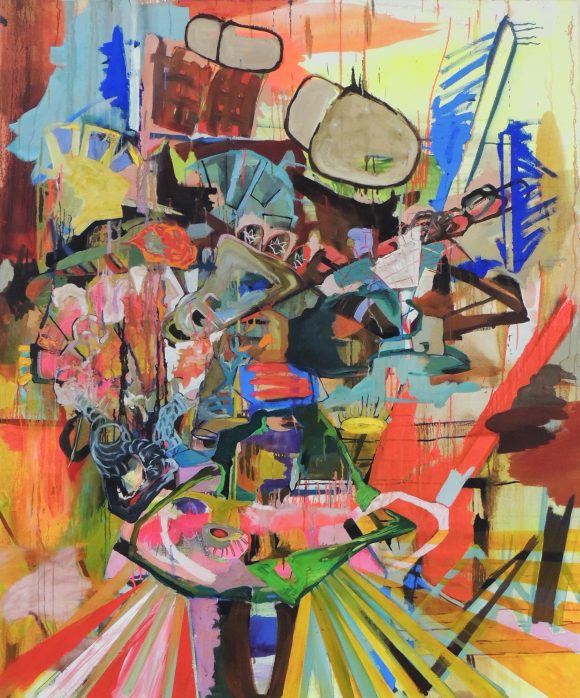
Mary Addison Hackett, Mr. Fast-acting Electric Sunshine, acrylic and oil on canvas, 2008. Gift of the artist. On view: Keck Center, Fowler School Wing, 2nd Floor
Hackett’s work focuses on representations of daily life. Hackett uses a wide variety of mediums, including painting, video, documentary, writing, and performance art. Her work incorporates feminism, humor, and philosophy.
Ellina Kevorkian
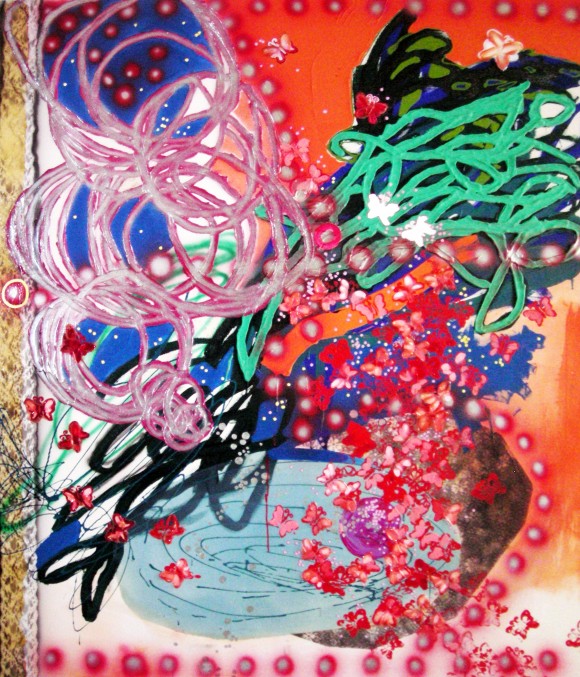
Ellina Kevorkian, Last Night My Tears Were Falling, I Went To Bed So Sad And Blue, Then I Had A Dream Of You, Mixed media, 2002. On view: Beckman Hall, 4th Floor.
Kevorkian is an artist and curator who finds hybridized relationships in painting, photography, video, and performance. Through her paintings and video art, she looks at intersections among feminism, identity, and autobiography– often with the participation of her twin sister and her children– while observing cultural representations of women.
Laura Aguilar
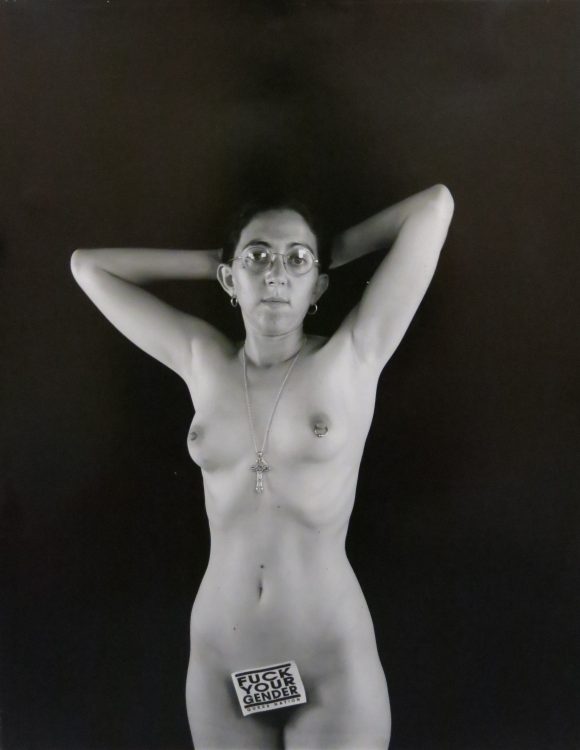
Laura Aguilar, Clothed/Unclothed #14, silver gelatin print, 1991. Gift of Anne Ayres. On view: Moulton Hall, 1st Floor
Aguilar is an American photographer whose work focuses on the experiences of often marginalized people such as black women, lesbians, and the obese, as well as the perception of her body. Aguilar is the daughter of a first-generation Mexican-American father, while her mother is of mixed Mexican and Irish heritage.
Phung Huynh
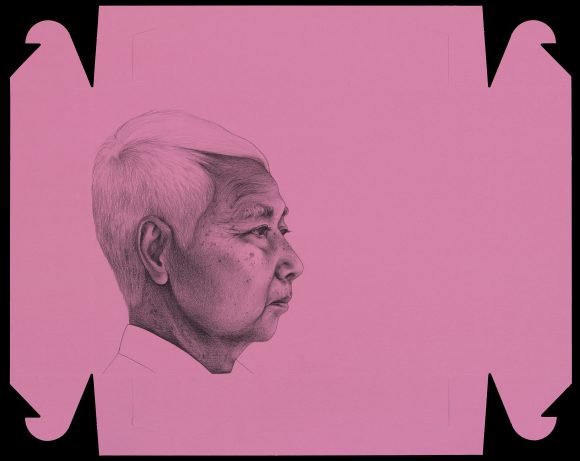
Phung Huynh, Vann Nath, graphite on pink donut box, 2019-2020. Purchased with funds from the Ellingson Family. On view: Beckman Hall, 4th Floor
Huynh is a Los Angeles-based artist and educator whose practice includes drawing, painting, public art, and community engagement. Huynh challenges beauty standards by constructing images of the Asian female body vis-à-vis plastic surgery to unpack how contemporary cosmetic surgery can whitewash cultural and racial identity. Her work of drawings and prints on pink donut boxes explores the complexities of assimilation and cultural negotiation among Cambodian and Vietnamese refugees who have resettled in the United States.
Inna Ray
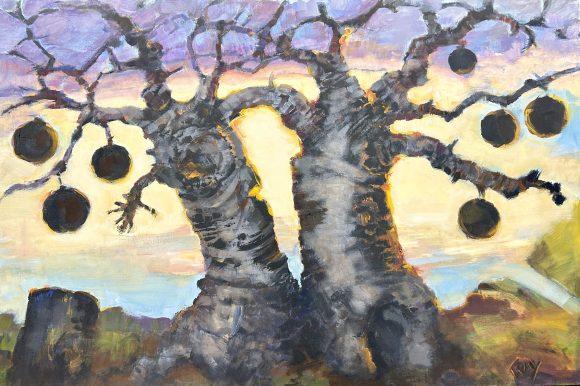
Inna Ray, Untitled, oil on canvas, c. 2000. Gift of the Estate of Inna Ray. On view: Burra Community Room at the Hilbert Museum of California Art.
Ray was a poet who drew, a painter who made photographs, a spiritual seeker, and a student of feminist theology. Her deeply felt relationship with the California landscape can be seen in her works. Graduating in the mid-1970s, she cooked, waitressed, did paste-up at the Los Angeles Times, and shot thousands of black and white photographs of Southern California’s people, city streets, and its arroyos, mountains, and deserts. As an artist intensely attentive to the living body of the world, her work is also a profound response to the interconnectedness of humanity and nature.
Why Representation Matters:
Collections like the Escalette play an essential role in ensuring female artists receive the recognition they deserve. By showcasing their work, the Escalette presents their achievements and inspires future generations of female artists. Women’s History Month reminds us that art history is still being written, and representation in museums, galleries, and collections is critical to shaping a more inclusive perspective.
As we reflect on women’s contributions to art, the Escalette Collection serves as a demonstration of the power of creative expression and the importance of amplifying diverse voices. We encourage you to take time to explore, appreciate, and celebrate the women whose work continues to shape the artistic world.
We invite you to explore all the works in the Escalette Collection by visiting our eMuseum.
Wilkinson College of Arts, Humanities, and Social Sciences is the proud home of the Phyllis and Ross Escalette Permanent Collection of Art. The Escalette Collection exists to inspire critical thinking, foster interdisciplinary discovery, and strengthen bonds with the community. Beyond its role in curating art in public spaces, the Escalette is a learning laboratory that offers diverse opportunities for student and engagement and research, and involvement with the wider community. The collection is free and open to the public to view.
